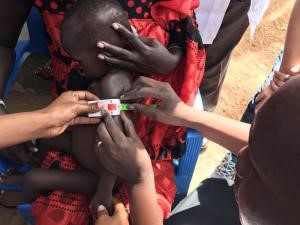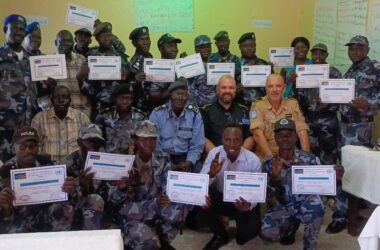By Kei Emmanuel Duku
A recent report by the GCFR on South Sudan’s food security has revealed a staggering estimate of 2.1 million children aged 6 to 59 months suffering from malnutrition between July 2024 and June 2025.
The report projects that from April to June 2025, five additional areas are expected to reach Integrated Food Security Phase Classification (IPC) Acute Malnutrition Phase 3 and above.
This phase signifies a critical situation where access to food is severely limited due to factors beyond just war or inadequate food stocks.
Alarmingly, Baliet County in Upper Nile State has been classified in the extremely critical IPC Acute Malnutrition Phase 5, the highest level of acute malnutrition.
The report highlights a dire national statistic: only 2% of children aged 6-23 months receive an acceptable minimum diet, plummeting to a mere 0.5% in Jonglei State.
Furthermore, the same report indicates that approximately 1.1 million pregnant and breastfeeding women are similarly facing inadequate food intake, hindering their ability to breastfeed exclusively.
Of the 2.1 million children suffering from malnutrition, 1.4 million are classified as having moderate acute malnutrition, while a critical 0.7 million are suffering from severe acute malnutrition.
According to the report, key drivers fueling this surge in malnutrition cases include poor sanitation and inadequate feeding practices, where children consume far less than the minimum acceptable diet.
The report notes that the recent devastating floods have severely impacted access to sanitation.
In flood-affected areas, only 10% of the population has access to improved sanitation, while over 70% practice open defecation.
Additionally, 37% are consuming unsafe drinking water, significantly increasing the risk of illnesses such as fever, cough, and diarrhea among children, particularly in Upper Nile, Jonglei, and Unity States.
The combined impact of recent floods and conflict in parts of Unity, Upper Nile, and Jonglei has drastically contributed to the rise in malnutrition.
This situation has been further compounded by limited access to essential healthcare services for children under five, pregnant women, and breastfeeding mothers.
Moreover, funding cuts to the Ministry of Health and other humanitarian organizations in January 2025 have severely reduced the coverage of essential health and nutrition services.
Compounding the crisis, the nutrition humanitarian response had only received 55% of its required funding as of November 2024.




